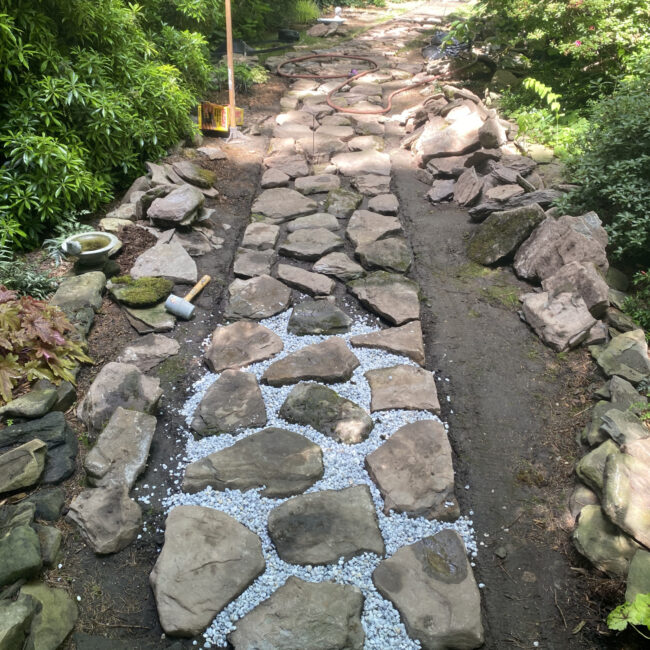Address
126 Maple Ave, Wallington, NJ 07057, USA
Work Hour
Open 24h





A masonry walkway is a durable and visually appealing pathway constructed using materials such as bricks, concrete pavers, or natural stone. These walkways enhance the aesthetics of outdoor spaces while providing a stable surface for foot traffic. Masonry walkways are popular due to their versatility in design, allowing for various patterns and styles to fit the landscape’s theme. They are also valued for their long-lasting nature and ability to withstand different weather conditions. Additionally, masonry walkways can significantly increase property value by improving curb appeal and functionality. Proper installation and occasional maintenance ensure these pathways remain in excellent condition over the years.
A masonry walkway is a functional and attractive addition to any outdoor space, crafted from durable materials such as bricks, concrete pavers, or natural stone. This type of walkway not only provides a practical route for foot traffic but also enhances the aesthetic appeal and overall value of a property.
Masonry walkways are known for their durability and resistance to weather conditions, making them suitable for all climates. They can be designed in a variety of styles, from rustic to modern, depending on the materials and patterns used. The most common materials for these walkways include:
The process of constructing a masonry walkway involves several key steps:
Maintaining a masonry walkway typically involves routine cleaning, re-sanding joints as necessary, and applying a sealant every few years to protect against moisture and wear. Checking for any shifting or settling of the pavers or stones can help prevent tripping hazards and maintain the structural integrity of the walkway.
In summary, a masonry walkway is an excellent choice for enhancing outdoor spaces, combining durability and design flexibility with practical functionality. Properly installed and maintained, these walkways provide a beautiful, long-lasting pathway that can enjoy for many years.
Creating a masonry walkway is a detailed process that blends aesthetics with functionality, resulting in a durable and attractive pathway. This type of project involves several steps, from initial design to the final touches. Here’s how it’s typically done:
Design and Planning: Start by deciding the route, width, and pattern of the walkway. Choose materials that complement the home and landscape. This is also the time to calculate the amount of materials needed.
Site Preparation: Clear the path area of all vegetation, roots, and debris. Level the ground, and if necessary, grade it to ensure proper drainage.
Base Installation: Lay a base of crushed stone or gravel and compact it thoroughly to create a stable and level foundation. This layer should be several inches thick, depending on the soil and climate conditions.
Edge Restraints: Install edging materials, such as metal or plastic edging, to define the walkway and hold the pavers in place. This helps prevent the pavers from shifting over time.
Sanding the Base: Over the compacted gravel, add a layer of coarse sand to help adjust the final height and level of the pavers. This also aids in drainage.
Laying the Pavers: Place the pavers in the desired pattern, starting from one end and working to the other. Ensure that the pavers are level and spaced evenly. For patterns requiring precise alignment or intricate cuts, additional tools and time may be necessary.
Cutting Pavers: Measure and cut pavers to fit any irregular spaces along the edges of the walkway. A wet saw, masonry chisel, or angle grinder can be used for cutting.
Filling Joints: Once all pavers are in place, sweep fine sand over the walkway, filling the joints between the pavers. This sand helps lock the pavers in place and prevents them from shifting.
Compaction: Use a plate compactor over the entire walkway to settle the pavers into the sand and ensure everything is even.
Final Touches: Apply a sealant if desired to enhance the color and protect the pavers from stains and weather damage. Clean up the area and conduct a final inspection to ensure all elements are properly installed and secure.
This methodical approach ensures a high-quality masonry walkway that is not only aesthetically pleasing but also structurally sound and long-lasting. Regular maintenance, such as checking for loose pavers and replenishing joint sand, will keep the walkway in top condition.
